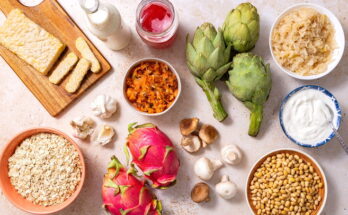Chili Seasoning Recipe: Do you love adding a kick of flavor to your dishes? Chili seasoning is the ultimate blend to bring warmth and depth to a variety of recipes, from hearty bowls of chili to zesty marinades.
Let’s explore how you can craft your own chili seasoning blend at home.
Why Make Your Own Chili Seasoning?
Store-bought seasoning blends often contain preservatives, added sugars, and unnecessary fillers. Making your own chili seasoning ensures you control the flavor, heat, and quality of ingredients. Plus, it’s surprisingly easy to prepare!
Ingredients for Homemade Chili Seasoning
Crafting chili seasoning starts with selecting the right ingredients. Here’s what you’ll need:
- Chili Powder: This forms the foundation of your mix, providing a mild heat and rich color.
- Paprika: Adds a subtle sweetness or smoky undertone depending on your preference.
- Cumin: A must-have spice for earthy, nutty flavor.
- Garlic Powder and Onion Powder: These elevate the seasoning with savory complexity.
- Cayenne Pepper: Brings the heat; adjust for spiciness.
- Crushed Red Pepper Flakes: Adds both heat and texture.
- Oregano and Coriander: Infuse the seasoning with a herby, slightly citrusy kick.
- Salt and Black Pepper: Essential for balancing flavors.
Optional Add-ins: A touch of brown sugar for sweetness or smoked paprika for a bolder flavor profile.
Essential Tools for Making Chili Seasoning
Gathering the right tools ensures a smooth blending process:
- Measuring Spoons: Precision is key for consistent flavor.
- Mixing Bowls: Ideal for combining ingredients evenly.
- Airtight Storage Containers: Preserve freshness and aroma.
Step-by-Step Instructions for Making Chili Seasoning
Step 1: Gather Your Ingredients
Make sure you have all the spices listed above, measured to your preference.
Step 2: Measure the Spices
Use measuring spoons to portion each ingredient accurately. For a basic batch, try:
- 2 tablespoons chili powder
- 1 tablespoon paprika
- 1 tablespoon cumin
- 1 teaspoon garlic powder
- 1 teaspoon onion powder
- ½ teaspoon cayenne pepper
- ½ teaspoon crushed red pepper flakes
- 1 teaspoon dried oregano
- 1 teaspoon coriander
- Salt and pepper to taste
Step 3: Mix Thoroughly
Combine all the spices in a mixing bowl. Stir until the colors are evenly distributed.
Step 4: Store Properly
Transfer the mixture into an airtight container and label it with the date. Store in a cool, dry place.
Tips for Customizing Your Chili Seasoning
- Adjust the Heat Level: Increase cayenne or red pepper flakes for spicier seasoning; tone it down by adding more chili powder.
- Balance Sweetness and Savory Flavors: A dash of sugar or cinnamon can mellow the heat and deepen the flavor.
- Experiment with Smoked Spices: Smoked paprika or chipotle powder adds a BBQ-like complexity.
How to Use Chili Seasoning in Recipes
Chili seasoning is a versatile powerhouse:
- Chili and Stews: Add 2–3 tablespoons to a pot of chili or stew.
- Marinades: Combine with oil and lime juice for meat or veggie marinades.
- Dry Rubs: Use as a rub for grilling meats or roasting vegetables.
Storing and Preserving Your Chili Seasoning
To ensure the seasoning stays flavorful:
- Storage: Keep it in a sealed container away from sunlight and moisture.
- Shelf Life: Most blends last up to 6 months if stored properly.
- Signs of Expiry: Fading aroma and flavor indicate it’s time to make a fresh batch.
Nutritional Benefits of Homemade Chili Seasoning
Homemade chili seasoning isn’t just flavorful; it’s also healthy!
- No Additives: Skip the artificial preservatives.
- Rich in Nutrients: Spices like paprika and cumin are packed with vitamins and minerals.
- Health Benefits: Capsaicin in chili peppers can boost metabolism, while garlic and onion powders may support immunity.
Common Mistakes to Avoid
Skipping the Mixing Step: Uneven blends can lead to inconsistent seasoning.
Using Low-Quality Spices: Fresh, aromatic spices make all the difference.
Improper Measurements: Follow a balanced ratio to avoid overpowering flavors.
FAQs About Chili Seasoning Recipe
What is chili seasoning made of?
Chili seasoning typically includes a blend of spices like chili powder, cumin, paprika, garlic powder, onion powder, oregano, and salt. Some recipes may also include cayenne pepper for added heat or brown sugar for a hint of sweetness.
How do I store homemade chili seasoning?
Store your homemade chili seasoning in an airtight container in a cool, dry place, such as a pantry. This keeps it fresh and flavorful for up to 6 months.
Can I customize the chili seasoning recipe?
Absolutely! You can adjust the spice levels or add your favorite ingredients, like smoked paprika or coriander, to suit your taste preferences.
How much chili seasoning should I use?
For most recipes, use about 1-2 tablespoons of chili seasoning per pound of meat or vegetables. You can adjust this amount based on your flavor intensity preferences.
Is chili seasoning gluten-free?
Yes, most homemade chili seasoning recipes are naturally gluten-free. However, always check your individual spice labels to ensure they are free from gluten-containing additives.
Can I use chili seasoning in recipes other than chili?
Definitely! Chili seasoning works well in tacos, soups, stews, roasted vegetables, and even as a rub for grilled meats.
Conclusion
Making chili seasoning at home is easy, affordable, and rewarding. Not only do you control the ingredients, but you also get to tailor the flavors to your liking. With this step-by-step guide, you can whip up a versatile seasoning blend perfect for chili, tacos, soups, and more. Say goodbye to store-bought blends and hello to a healthier, tastier alternative.



